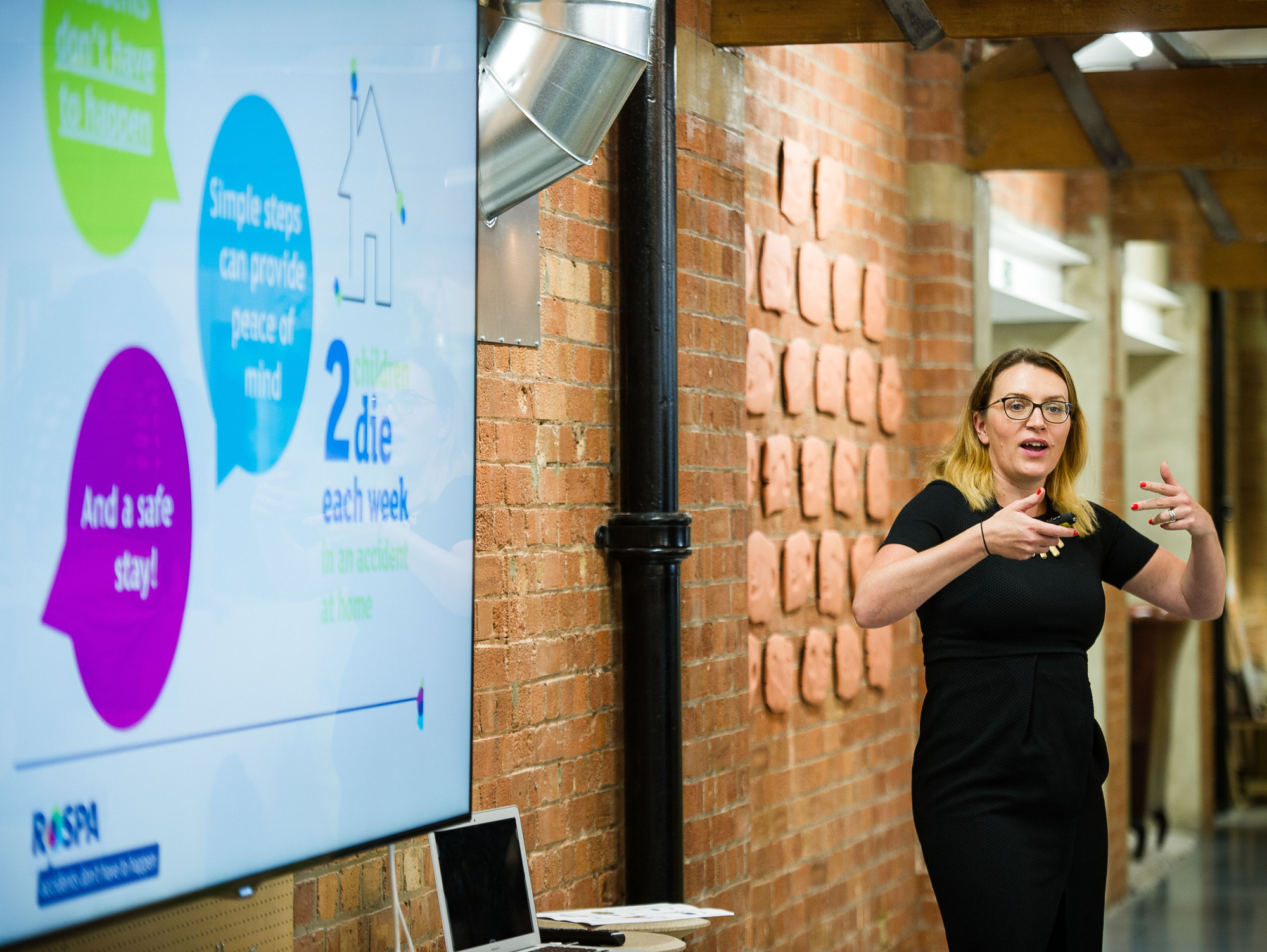RoSPA shares top safety tips for child accident prevention

This week during National Home Security Month, we’ve asked leading accident prevention charity, The Royal Society for the Prevention of Accidents (RoSPA) to provide child safety tips to our community.
Did you know that children under five are more likely to be injured at home than anywhere else? But, these accidents don’t have to happen. By preparing your home against key risks and having some basic equipment on hand, you can take make your home more child-friendly and give you and your guests peace of mind.
Here are RoSPA’s top five tips for child safety in the home:
Tip 1. Take a child’s eye view
Get down on your hands and knees to look at your home or listing from a child’s point of view. You’ll notice any sharp edges, dangling cords, cleaning product bottles, items with button batteries, and small ornaments in easy reach much better from this level. You can then take steps to reduce – or even remove – the risk. Check out RoSPA’s Keeping Kids Safe hub for more information on keeping kids safe at home.
Tip 2. Make blinds safe
Tragedy can strike if children get tangled up in dangling looped blind cords. To ensure this doesn’t happen, secure looped blind cords in your home by tying them up out of a child’s reach using a cleat or cord tidy. If you buy new blinds, make sure they comply with regulatory standards and fit any safety kit that comes with them. Watch video advice about making blinds safe.
Tip 3. Take precautions with stairs and windows
If you have stairs in your home or listing, make sure they’re fitted with child safety gates which won’t come out of place if a child leans on them. Ideally, safety gates should be placed at the top and bottom of a staircase.
To prevent falls, windows on the first floor or higher should only open to 10cm. Window restrictors enable this and allow fresh air in while keeping children safe. Remember that your guests might need to escape out of a window if there’s a fire, so make sure the adults know how to open the windows fully in an emergency. Find out more about preventing a child’s fall.
Tip 4: Protect from scalds
When young children suffer severe scalds, the effects can last a lifetime. It is the law that new homes must have a thermostatic mixing valve (TMV) to limit the temperature of bath water to 48 degrees celsius. TMVs can also be “retro-fitted” to your existing bath to help prevent the most severe scalds. Read more about preventing scalds and burns.
Tip 5: Lock away cleaning products
If you have young children staying in your house, cleaning products, dishwasher tablets, and laundry capsules should be kept out of their sight and reach – ideally in a locked cupboard. The same goes for any medicines or potentially hazardous substances that you have at home. Don’t forget about restricting access to any sheds and garages or anywhere that may contain tools or chemicals. Find out about poisoning from household cleaning products.
For additional child safety resources and information, please visit NHS Choices. The RoSPA website is also full of accident prevention information and advice relevant for all age groups, including children.